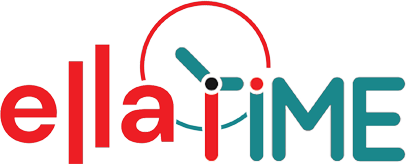USPhoneBook sits in a crowded field of “people finder” tools that aggregate public and semi-public records to help you look up names, phone numbers, and addresses. Whether you’re trying to identify an unknown caller, locate an old classmate, or verify contact details for a business errand, it promises quick answers with minimal friction. This deep dive explains how it works, what you can (and can’t) expect, the privacy trade-offs, and smart ways to use it responsibly.
What USPhoneBook Is (and isn’t)
At its core, USPhoneBook is a data aggregator. It collects, normalizes, and displays contact information linked to U.S. residents—typically names, current and historical addresses, phone numbers (landline and mobile when available), and sometimes associated persons. It’s designed for fast, consumer-friendly lookups rather than exhaustive investigative reports.
Equally important: USPhoneBook is not a background-check service and is not a consumer reporting agency under the Fair Credit Reporting Act (FCRA). That means you shouldn’t use its results to make decisions about employment, housing, credit, insurance, or other eligibility determinations. Think of it as a convenience tool for contact discovery and caller identification, not a compliance-grade dossier.
Common Use Cases
-
Reverse phone lookup: Paste an unfamiliar number to see who it might belong to and where it’s based.
-
Find contact info: Search by person’s name and city/state to surface phone numbers and mailing addresses.
-
Reconnect and verify: Confirm that the John/Jane Doe you found is actually the person you intend to reach by cross-checking middle initials, prior cities, or linked relatives.
-
Light due diligence: Before you meet a marketplace seller or hire a local handyman, you can sanity-check that their number and location appear consistent.
How It Works Behind the Scenes
People search engines rely on a mosaic of sources. While USPhoneBook doesn’t publish a step-by-step list, typical pipelines include:
-
Public records: Property deeds, voter registrations (where available), and other government filings that are accessible by law.
-
Telephone carrier and directory data: Legacy white-pages-style listings, number portability databases, and other telecom-adjacent feeds.
-
Commercial data brokers: Third-party providers that license compiled consumer data to multiple sites.
-
User-submitted updates (occasionally): Some platforms ingest corrections or removals submitted by individuals, which can propagate across partners.
The platform then reconciles duplicates, standardizes addresses (e.g., USPS formats), and attempts to link records to a single person profile. Expect occasional mismatches—especially for common names or recycled phone numbers.
Key Features You’ll Typically See
-
Reverse phone search: The signature capability. Results often include name, city/state, line type, and possible carrier.
-
Name & address search: Input first/last name plus a location to filter. You may see past addresses, possible age ranges, and household associations.
-
Related persons: Hints at likely relatives or household members to help you disambiguate people with identical names.
-
Map & residence history: A timeline of prior locations can help confirm whether you’ve found the right individual.
-
Opt-out mechanism: A form or process for removing your information from public results (more on that below).
Strengths
-
Speed and simplicity: You can get a result in seconds with no need to create an account in many cases.
-
Low friction for reverse lookups: Particularly useful for identifying frequent spam callers vs. genuine local numbers.
-
Cost-effective: Many basic lookups are free or low-cost compared with full background check reports.
-
Decent recall for landlines: Historical landline data is often robust, which helps with older entries and address linkages.
Limitations
-
Coverage gaps and staleness: Not every mobile number or recent move will appear. Data can lag behind real life.
-
False positives: Common names and recycled numbers can lead you to the wrong person if you don’t cross-verify.
-
Limited depth: You won’t get criminal records, credit data, employment verification, or other regulated datasets.
-
No FCRA use: You can’t legally use non-CRA people search data for hiring, tenant screening, or credit decisions.
Privacy, Ethics, and Your Digital Footprint
People search tools sit at the intersection of open data and personal privacy. If your name, address, or phone appears on USPhoneBook, it doesn’t mean you did something wrong—it usually means pieces of your public trail (property transactions, old directory listings, or brokered contact files) have been stitched together.
If you find your information and want it removed:
-
Find your listing: Search your name, past cities, and any phone numbers associated with you. Confirm it’s your profile by checking address history and linked relatives.
-
Use the site’s opt-out form: Most people search sites, including USPhoneBook, provide a removal workflow. You’ll typically submit the profile URL and verify via email or SMS.
-
Repeat for variations: Married/maiden names, nicknames, and old addresses can generate multiple listings.
-
Calendar a re-check: Data can reappear due to upstream broker refreshes. Set a reminder to re-search every few months.
-
Remove at the source: When possible, reduce exposure at the upstream level (e.g., opt out of major data brokers, tighten social profiles, and request redactions on optional public directories).
If you’re the one searching: Use findings responsibly. Don’t stalk, harass, or publish private details. Treat data as approximate and respect boundaries when contacting someone you found online.
Legality and Best-Practice Guidance (Plain-English, Not Legal Advice)
-
Stick to lawful, ethical purposes: Reconnecting, verifying a contact, or identifying spam calls is generally fine.
-
Avoid regulated decisions: For employment, housing, credit, or insurance, use a compliant background check provider that explicitly operates under the FCRA and provides dispute rights.
-
Document consent when appropriate: If you’re a business contacting leads, ensure your outreach complies with TCPA/CAN-SPAM and relevant state privacy laws.
Tips to Get Better Results
-
Start broad, then narrow: Begin with name + state, then filter by city. Add a middle initial or approximate age to reduce false positives.
-
Leverage reverse logic: If a name search is noisy, try a known phone number or a distinctive past address to pivot into the correct profile.
-
Cross-verify across two sources: Confirm a match with at least one other directory or a social profile. Consistency across time and locations is your friend.
-
Mind number portability: Mobile numbers move between carriers—and sometimes people. If results seem contradictory, the number may have been reassigned.
-
Check recency signals: Look for the latest “last seen” dates, most recent addresses, and any recent carrier info to gauge freshness.
Who Benefits Most?
-
Everyday consumers dealing with mystery callers or trying to reconnect with acquaintances.
-
Solo professionals and small businesses performing light contact verification before outreach or on-site work.
-
Marketplace buyers/sellers meeting up in person who want basic sanity checks on contact details.
-
Family researchers tracing moves and addresses to fill in gaps in informal family trees.
Comparisons and Alternatives (At a Glance)
-
Other people search engines: Sites with similar feature sets can serve as second opinions. Using two can improve confidence.
-
Official public records: County assessor sites, state business registries, and court portals offer authoritative data, though they’re less user-friendly.
-
CRA-compliant background checks: For jobs, tenants, or credit-adjacent decisions, use a service that provides adverse-action and dispute procedures.
Safety & Etiquette When Reaching Out
-
Open with context: If you call or text a number you found, briefly explain how you got it and why you’re reaching out.
-
Offer an exit: Make it easy for the person to decline further contact.
-
Protect your own privacy: Consider using a secondary number (e.g., a VoIP line) for first contact.
-
Log outcomes: If you’re verifying contacts for business, note which numbers were accurate to reduce repeat pings.
Final Take
USPhoneBook exemplifies the convenience—and the compromise—of modern data aggregation. It’s fast, often free for basic lookups, and handy for reverse phone searches and contact verification. But it’s not exhaustive, it’s not built for regulated screening, and the data can be imperfect or out of date. Use it as a starting point, confirm what matters, and respect both the law and people’s privacy as you go.







